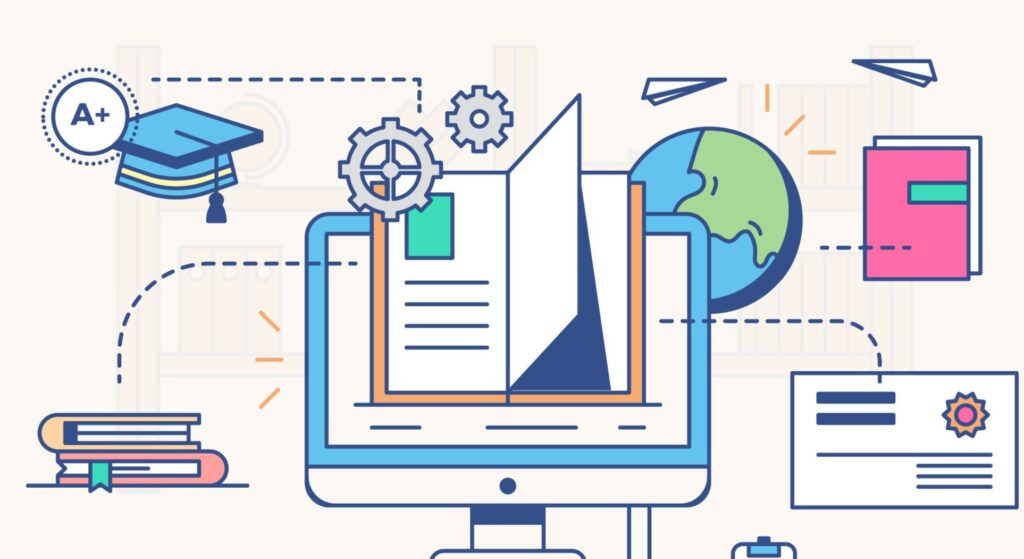
As corporate training and e-learning continue to grow, creating engaging and effective learning content is more important than ever. Traditional approaches often fall short in maintaining attention and delivering complex information in a simple, digestible way. Motion graphics provide a solution by turning key concepts into visually dynamic presentations that are easier to follow and retain. In this blog, we’ll look at how motion graphics can improve the effectiveness of your corporate training and e-learning programs, making learning more enjoyable and impactful for your team.
1. Boosts Engagement and Attention
One of the main challenges in corporate training is keeping learners engaged. Employees often struggle to focus when faced with static slides, dense reading materials, or long hours of monotonous content. Motion graphics help solve this problem by adding dynamic, visually appealing elements that capture the learner’s attention.
Why It Works:
- Visual Appeal: Motion graphics are more engaging than traditional training methods because they provide continuous movement and interaction. The brain processes visuals faster than text, so learners grasp concepts more easily.
- Simplifying Complex Ideas: When explaining intricate processes or technical topics, motion graphics break them down into smaller, easy-to-digest pieces. For example, showing how a software tool works or explaining business processes becomes easier when paired with simple animations.
Example:
Imagine a corporate training module on cybersecurity. Instead of a lengthy document explaining password security, a motion graphic could visually demonstrate best practices for creating strong passwords, while animations show the consequences of weak security.
2. Enhances Learning Retention
Studies show that people remember information better when it is presented visually. Motion graphics help learners retain key messages by turning abstract ideas into clear, concise visuals. In corporate training and e-learning environments, this can dramatically improve the retention of information.
How It Helps:
- Memory Association: Motion graphics help learners associate visuals with the information being delivered, which enhances their ability to remember key points. For instance, employees are more likely to recall a workplace safety protocol if they’ve seen it demonstrated with animations rather than just reading about it.
- Improving Comprehension: Visual storytelling helps explain topics faster and more efficiently than text alone. When learning about a new process or piece of software, employees can better retain the step-by-step instructions if they watch an animated sequence showing the steps in action.
Example:
In an e-learning course about compliance training, animated characters could visually walk employees through scenarios where they need to make ethical decisions. The characters’ actions and consequences create memorable associations that reinforce the learning.
3. Customizes Learning for Different Audiences
Not all employees learn in the same way, and one-size-fits-all training programs often fail to meet the diverse learning styles of an organization’s workforce. Motion graphics offer a way to customize training for different learning preferences, such as visual learners who benefit more from seeing concepts in action.
Benefits:
- Versatility: Motion graphics can be adapted for various purposes and learners. For example, companies can create animated explainer videos for new hires while using more in-depth, technical animations for advanced training programs.
- Cultural and Language Adaptations: Motion graphics can easily be localized to different languages or cultural contexts, making it easier for global companies to standardize training across regions.
Example:
A multinational corporation could use the same core motion graphic on company values but adjust voiceovers and text overlays to reflect local languages and cultural nuances.
4. Reduces Cognitive Overload
One of the challenges in corporate training is presenting large amounts of information without overwhelming employees. Cognitive overload happens when learners are given too much content to process at once, making it harder to retain information. Motion graphics help mitigate this issue by breaking down content into manageable, bite-sized pieces.
How It Works:
- Chunking Information: Motion graphics allow you to break down complex topics into smaller, more digestible sections, easing the cognitive load on learners. This method aligns with how our brains process information in short bursts rather than long, uninterrupted streams.
- Focusing Attention: Motion graphics can direct learners’ focus to the most critical information by highlighting key points, adding movement, or changing colors. This ensures that learners aren’t overwhelmed with too much information at once.
Example:
In a training module about data privacy, motion graphics could break the subject into individual segments such as data collection, storage, and sharing, each presented separately with clear visual cues to ensure learners focus on one concept at a time.
5. Promotes Consistent Training
Consistency in training is essential, especially in corporate settings where every employee needs to be aligned with company policies, procedures, or product knowledge. Motion graphics ensure that the same message is delivered consistently across different teams, departments, or global offices.
Key Advantages:
- Standardization: With motion graphics, the content remains the same for all employees. Whether it’s compliance training or product tutorials, everyone receives the same, high-quality information.
- Reusable Content: Once created, motion graphics can be reused in different training sessions or onboarding programs, ensuring long-term value.
Example:
For a company launching a new product, a motion graphic explaining the product’s features and benefits can be used across different departments to ensure all employees have the same understanding, regardless of their role or location.
6. Makes Learning Fun and Engaging
Corporate training doesn’t have to be dull. Motion graphics can introduce an element of fun and creativity, helping employees enjoy the learning process. Whether through playful animations, engaging character design, or creative storytelling, motion graphics can transform traditional learning environments into interactive, enjoyable experiences.
How It Adds Value:
- Boosts Motivation: Engaging visuals, combined with storytelling, keep learners motivated to complete training modules, improving overall participation rates.
- Encourages Active Learning: Motion graphics can be paired with interactive quizzes, checkpoints, or scenarios that allow learners to apply what they’ve just watched. This active participation reinforces learning and makes it more enjoyable.
Example:
A sales training module could feature animated characters role-playing different customer scenarios. As employees watch the characters handle objections or answer questions, they stay engaged while learning how to improve their own skills.
Ready to bring your corporate training to life? At Gusai Media, we specialize in creating dynamic motion graphics that simplify complex topics and make learning more engaging. Whether you’re developing e-learning modules or delivering corporate training, we can help you design high-impact visuals that enhance knowledge retention and boost engagement. Contact us today to find out how we can elevate your training programs and empower your team to learn more effectively!
